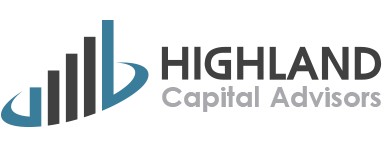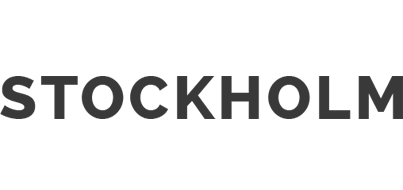
Trustee-Directed Services
Through several tools and capabilities, we look to help you avoid any conflict of interest, ID which is a fiduciary and who is not and adopt prudent policies and processes
This starts with your Committee Charter and Investment Policy Statement which are the “blueprints for how your investment program is expected to operate now and into the future. These policies, along with these other tools and capabilities, include ensure proper governance:
- Committee Charter – to ensure committee roles are understood and decision-making authority is followed;
- Investment Policy Statement – to document the substantive and procedural prudence that is embodied in our quarterly performance reporting process;
- Asset Allocation Policy; and
- 408(b)2 Disclosure Reviews – to ensure service provider arrangements do not constitute and prohibited transactions.
At your preference, Highland will act as an ERISA 3(21) or 3(38) fiduciary.
Fund Search & Selection
Highland’s research process, resources, and capabilities are derived through close coordination among our Senior Consultants.
Unlike some firms, Highland’s research function is not a centralized, home-office investment “product” for mass distribution (i.e., an approved funds list), but a professional service customized for each client (i.e., open universe screening).
Highland’s proprietary fund screening and selection process are not influenced in any way by alliances, affiliations, brands, or selling agreements. We seek to find the best funds that statistically demonstrate persistent value across a variety of quantitative and qualitative metrics.
Our screening and selection process produces specific recommendations for each mandate.
Menu Design
Menu design has a powerful effect on outcomes. Highland adheres to well researched best practices. We don’t merely look to fill style boxes; we choose investment vehicles that work in harmony with each other.
Asset Allocation Studies
The evaluation, development, and maintenance of investment policies are dependent upon a strong foundation of trust and planning. This comes through time spent in interviews and conversations designed to understand the best configuration of asset allocation alternatives that meet the goals and objectives of each portfolio.
Highland has a sound and rational understanding of investment markets and works with its clients to develop first-order principles that drive risk-budgeting decisions within a range of strategic asset allocation alternatives. These principles include:
- Time horizon
- Loss tolerance
- Return requirements
- Spending policy
- Nature of liabilities
- Liquidity needs
- Investment restrictions
Highland reviews and updates firm-wide capital market assumptions and constraints annually. After tailoring these parameters for each client, we employ mean-variance optimization techniques to develop an efficient frontier and Monte Carlo simulations for return and wealth percentile forecasting. While the asset allocation study process is forward-looking, we can backtest using historical indices as well as other return histories.
LDI Strategies
For clients pursuing liability-driven investing strategies, we exhaustively analyze upfront to assure that we have a thorough understanding of the actuarial assumptions and methods that will be used so we can thoughtfully construct a hedged portfolio that is most compatible with how future valuations will be performed.
We work closely with the PPlan’s actuary to regularly update and integrate plan liabilities and forecasted cash flows into our liability-driven investing diagnostics.
Performance Monitoring
und manager performance is reviewed and assessed through a context of value-added. Given that all major asset classes can be accessed through a low-cost index alternative, any fee premium for active management should produce value above the raw or risk-adjusted returns of the benchmark net of fees. Similarly, a low-cost index fund should closely track its underlying benchmark gross of fees.
Sound monitoring begins with thoughtful benchmark selection. Highland’s over-arching philosophy is to assign a benchmark that reconciles the portfolio mandate and the Manager’s stated objectives. As a result, Highland does not blindly rely on the primary or secondary parameters designated in a fund’s prospectus. Instead, we consider how well these objectives harmonize with the client’s specific mandate as defined in the Investment Policy Statement, Performance Report, or other material. We then present to the client our recommended benchmarks, including our justification for their selection.
Fee Evaluations
As fiduciary to the Plan, we not only help monitor the investments, but we can also monitor the service providers concerning their service, capabilities, and fee competitiveness. Our experience working with a variety of record-keepers, third-party administrators, custodians/trading platforms, actuaries, pension plan administrators, etc. provide valuable perspective on what is commonly available and what to expect. Our vendor search experience adds to this perspective.
Plan Design
The retirement plan design reflects the philosophy of the plan sponsor, and design objectives have changed dramatically over the last 20 years. While some plan sponsors continue to focus on income replacement objectives for lifelong careers (i.e., 30 years or more), many are focusing on providing retirement savings subsidies during shorter career “segments.” Under either approach, we have the expertise to conduct a variety of income-replacement studies to inform design alternatives and employee engagement campaigns.
Merger and Acquisition Support
We are involved with evaluating the plan merger impact and how the respective designs needed to be harmonized in a uniform go-forward strategy. We help to identify the provisions that are protected benefits and must be maintained and evaluate which of the requirements that are not protected should move forward.
Vendor Search
As fiduciary to the Plan, we not only help monitor the investments, but we also monitor the providers concerning their services, capabilities, and fee competitiveness. Our experience working with a large variety of record-keepers, third-party administrators, custodians/trading platforms, actuaries, pension plan administrators, etc. provide valuable perspective on what is commonly available and what to expect. Our vendor search experience adds to this perspective.
When benchmarking service providers to find the right fit for a plan sponsor, we go beyond just the fees to understand the value of the services being provided.
Fiduciary Education
We find that the most meaningful education is delivered on a real-time basis through the regular committee meeting process. Every topic of discussion or decision typically provides an opportunity to expand the knowledge and understanding of our clients and their fiduciary responsibility. We put context and relevance behind every recommendation we make.
At your preferences, we can also take a very traditional, linear approach that reviews the underlying legal framework in some detail through a dedicated fiduciary training session. However, this approach can be overwhelming for larger Committees with rotating membership.
On initiation, we would institute a Committee Charter to help defined the roles and responsibility for committee along with confirmation of the IPS, both of which will be reviewed on an annual basis with the committee members.


